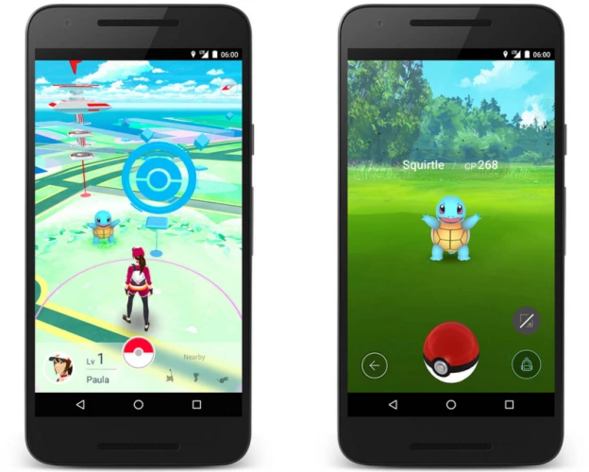Gotta Crash Em All?
A recent study led by an SDSU researcher links the hit game Pokmon GO with traffic danger.

“We need safety guidelines for game designers, public health monitors, and government agencies so that these new games will be safe for players.”
Soon after Nintendo released its app-based, “augmented reality” video game Pokémon GO, the sidewalks surged with people fixated on their phones searching for the game’s cartoon creatures. Public health leaders lauded the game for encouraging physical activity. But newly released data suggests there are negative health effects, too: Hundreds of thousands of players are driving while playing the game or distracted by other players, risking serious injury.
Researchers led by San Diego State University’s Graduate School of Public Health assistant research professor John W. Ayers and University of California, San Diego professor Linda Hill analyzed social media and news reports to investigate the driving dangers of Pokémon GO.
“By relying on big media data, we can rapidly discover emerging public health issues by directly observing what the public is thinking and doing in their own words and in near real-time,” Ayers said.
As reported in JAMA Internal Medicine, the researchers analyzed Twitter postings soon after the game’s release between July 10 and 19, 2016 that combined the word “Pokémon” with words like “driving,” “drive,” or “car.” They compiled and analyzed 345,433 such tweets to determine whether a driver was playing the game, a passenger was playing, or a pedestrian was playing and interacting with traffic.
According to that analysis, about a third of these tweets (33 percent) came from Pokémon GO players either driving or riding in a car, or from pedestrians distracted by the game. For instance, 18 percent indicated that the player was driving, 11 percent that a passenger was playing, and 4 percent that a pedestrian was playing near traffic. By comparison, public health messages discouraging driving while playing or playing the game near traffic were rare (13 percent).
By analyzing Google News articles from the same period, the team identified 14 different car crashes that news reporters attributed to Pokémon GO. After the study was completed, the researchers discovered that at least two fatal traffic accidents had been attributed to game play.
“Considering that people had to tweet or be tweeted about to be captured in our study, we are likely underestimating distractions linked to Pokémon GO,” said Eric Leas, the study’s coauthor and a doctoral student in the SDSU/UCSD Public Health Joint Doctoral Program. “Yet, in just 10 days, our findings suggest there were more than 110,000 cases of potentially distracted drivers or pedestrians, and 14 accidents, giving a clear justification for a public health response.”
Such numbers are startling in light of the fact that motor vehicle crashes are the leading cause of death among those between the ages of 12 and 24—roughly the game’s target audience, Hill noted.
“Pokémon GO may be accelerating and amplifying these dangers, entirely outside of any public health checks,” Hill said.
A variety of solutions could address these safety concerns, the researchers noted, such as ensuring the game cannot be played at driving speeds or limiting gameplay near roadways. Now is the time to think about potential solutions, Ayers said, because many other games like Pokémon GO will surely hit the market in the coming years. Recently, Apple announced plans to expand features of the game using the Apple Watch, making play even easier.
“Pokémon GO is only the beginning,” Ayers said. “Its success means there will be many more augmented reality games that pose similar dangers on roadways. We need safety guidelines for game designers, public health monitors, and government agencies so that these new games will be safe for players.”
Additional collaborators on this study included: Jon-Patrick Allem of the University of Southern California; Mark Dredze of Johns Hopkins University; and Jurek Grabowski of the AAA Foundation for Traffic Safety.



